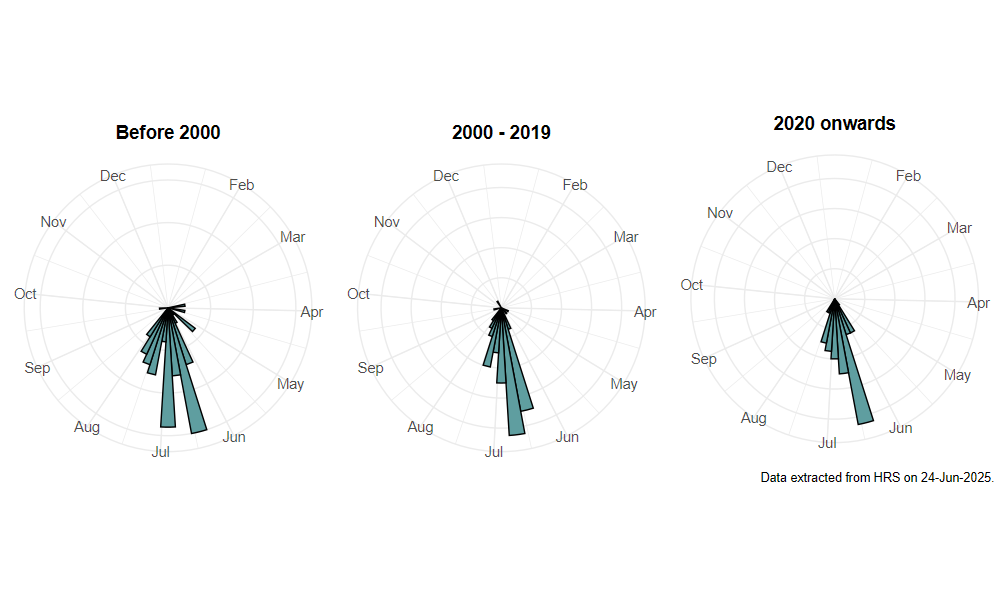Mallota cimbiciformis (Fallén, 1817)
Identification
Identification difficulty = 2. ![]()
![]() according to Ball & Morris, 20241
according to Ball & Morris, 20241
Biology
This is a woodland and parkland species that is associated with over-mature trees with water-filled rot-holes. The larva is a filter-feeder and develops in water-filled rot -holes in trees such as Beech Fagus sylvatica and Horse Chestnut Aesculus hippocastaneum. It occasionally strays some distance from its breeding site and has been found at Hogweed Heracleum sphondylium some distance from suitable trees.
Flight period
The following plots show the number of unique records per week excluding those reported to be of immature stages.

Status
Lower Risk (Nationally scarce) - Ball & Morris, 20142. Notable - Falk, 19913. Vulnerable (RDB2) - Shirt, 19874.
Distribution
This is mainly a southern English species that occurs sporadically as far north as Glasgow. There are post-1990 records from Cornwall, Dorset, North Somerset, South Hampshire, North Wiltshire, South Essex, Leicestershire, Northamptonshire, South-east Yorkshire, South Lancashire Durham and Lannarkshire.

Trends
The following plots show the Frescalo TFactor vs year and a map of the rescaled frequency (all records) for the species.
-
Ball, S., & Morris, R. (2024). Hoverflies of Britain and Ireland. WILDGuides (3rd ed.). Oxford: Princeton University Press. ↩
-
Ball, S., & Morris, R. (2014). A review of the scarce and threatened flies of Great Britain. Part 6: Syrphidae. ( No. 9). Species status (pp. 1–130). Peterborough: JNCC. ↩
-
Falk, S. (1991). A review of the scarce and threatened flies of Great Britain. ( No. 39). Research and Survey in Nature Conservation (pp. 1–194). Peterborough: NCC. ↩
-
Shirt, D. (Ed.). (1987). Red Data Books: 2. Insects. Peterborough: NCC. ↩